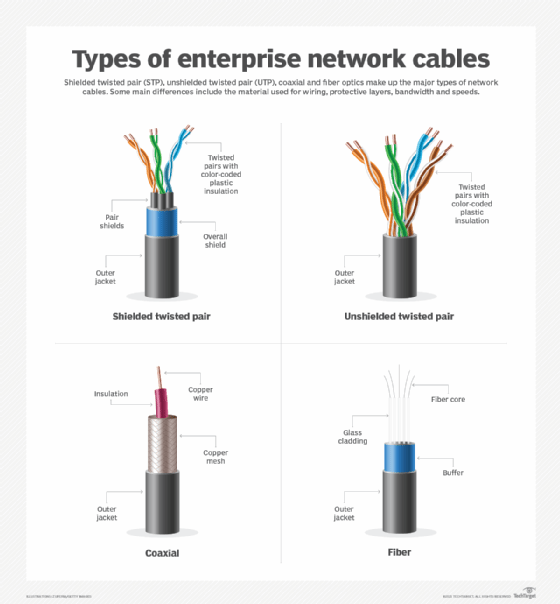intermediate distribution frame (IDF)
What is an intermediate distribution frame (IDF)?
An intermediate distribution frame (IDF) is a free-standing or wall-mounted rack for managing and interconnecting a telecommunications cable between end-user devices and the main distribution frame (MDF).
Often set up at a central office or on customer premises, an IDF helps cross-connect user cable media to individual user line circuits and serves as a distribution point for multipair cables from the combined distribution frame (CDF) to separate cables connecting to devices located in different areas of the building.
For example, an IDF might be located on each floor of a multifloor building, routing the cabling through the walls to an MDF on the first floor. The MDF would contain cabling that interconnects to the phone company, a service provider or to other buildings.
Wide area network (WAN) and local area network (LAN) environments, as well as telephone exchange central offices, often use IDFs.
IDFs can contain circuit termination equipment from various auxiliary components in central office environments. In both LAN and WAN environments, IDFs can hold different types of devices, including backup systems, such as hard disk drives or redundant arrays of independent disks; connections, such as coaxial, category and fiber optic cables; and networking devices, such as hubs, switches, routers, etc.

What is a distribution frame?
A distribution frame is a passive connection system that is used to interconnect and terminate telecommunications and audiovisual cable systems. Distribution frames usually have components, including groups of connection blocks mounted on vertical racks within a dedicated enclosure.
What is a main distribution frame?
The MDF is the demarcation point or primary hub that interconnects public and private telecommunications, linking the lines coming into a building with an internal network through a number of IDFs. Any cable entering a central office or customer premises must first connect to a centralized MDF closet before connecting to each individual IDF closet and, ultimately, to individual devices on the network.
What is the purpose of a main distribution frame or main distribution facility?
The primary purpose of an MDF or main distribution facility is to connect and manage the wiring used for telecommunication between a service provider and IDFs. MDFs connect both public and private lines that come into a facility with networking devices within the facility.
What is a combined distribution frame?
A CDF is a distribution frame that combines the functions of both MDFs and IDFs and comprises both vertical and horizontal terminating blocks. However, vertical blocks are used to terminate any permanent external lines entering the station.
Explore 12 common network protocols and their functions and trends spurring the evolution of network hardware.
